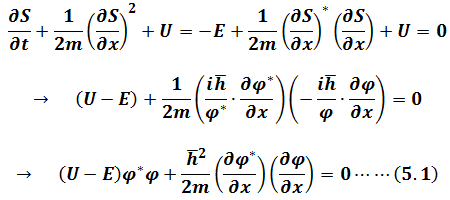Physics derive: OB Tsai Write & Edit: BMC
The study of the motion is an ancient one, making Classical Mechanics one of the oldest and largest subjects in physics. It is also widely known as Newtonian Mechanics. The initial development of Classical Mechanics is often referred to as Newtonian Mechanics, with the mathematical methods invented by Isaac Newton. The most famous equation is known as Newton's Second Law of Motion.

【Isaac Newton(1643-1727)】
After Newton, more abstract and general methods were developed, leading to reformulations of Classical Mechanics known as Lagrangian Mechanics and Hamiltonian Mechanics. Joseph Lagrange and William Hamilton extend substantially beyond Newton's work, particularly through their use of analytical mechanics.
Using mathematical analysis and a function called the Lagrangian, choosing the generalized coordinates, with Principle of Least Action, Lagrangian Mechanics is a reformulation of Classical Mechanics. It is widely used to solve mechanical problems when Newton's formulation of Classical Mechanics is not convenient.

【Joseph Lagrange(1736-1813)】
Hamiltonian Mechanics is also a theory developed from Classical Mechanics. Based on Lagrangian Mechanics, Hamilton uses a different mathematical formalism, providing a more abstract understanding of the theory. It was an important reformulation of Classical Mechanics, which later contributed to the formulation of Statistical Mechanics and Quantum Mechanics.

【William Hamilton(1805-1865)】
Classical Mechanics and Quantum Mechanics are the two major sub-fields of mechanics. With Wave-particle Duality, Quantum Mechanics use a mathematical way, the wave function, to provide information about the probability amplitude of position, momentum, and other physical properties of a particle. Erwin Schrödinger developed the fundament of Quantum Mechanics and formulated his Schrödinger Equation that describes how the quantum state of a quantum system changes with time. In the Copenhagen Interpretation, the wave function is the most complete description that can be given of Quantum Mechanics' system. Solutions to Schrödinger's Equation describe not only molecular, atomic, and subatomic systems, but also macroscopic systems, possibly even the whole universe.

【Erwin Schrödinger(1887-1961)】
With Pierre de Fermat's principle of light, Leonhard Euler's mathematical method, Christiaan Huygens' theory of wave source, and Richard Feynman's guess, now we will try to show how finally Schrödinger Equation can be derived from Newtonian Mechanics, during Lagrangian and Hamiltonian, after Wave-particle Duality of Quantum Physics.
Chapter 1-Lagrangian Mechanics
From Newton's Second Law of Motion

And Conservative Force is

Let(1.1)=(1.2)

LHS

RHS

LHS=RHS


Define Lagrangian

Action

Principle of Least Action

Also define

And

Here using integration by parts

So(1.3)becomes

We get Lagrange's Equations of the first kind

Chapter 2-Hamiltonian Mechanics
From Newtonian Mechanics

Partial differential of Lagrangian is

Where

With spatial translation invariance

And time translation invariance

Here

And

So(2.1)becomes

Now define Hamiltonian

Where

We get Hamiltonian Energy

Chapter 3-Partial Differential between Lagrangian and Hamiltonian
From Lagrangian

Here

With partial differential of Lagrangian

Taking(3.1)、(3.2)、(3.3)into following formula

Where

Minus(3.4)and plus 

Come to Hamiltonian

Where

Then come back to

Where

Because of

And

Here

And

So

Chapter 4-Hamiltonian Energy with Action
Considering about

Action

And

So

Hamiltonian Energy is

Taking into(4.1)、(4.2)we get

Chapter 5-Derivation of Time-independent Schrödinger Equation
For light wave function

Fermat Principle that the path taken between two points by a ray of light is the path that can be traversed in the least time. The shortest path can be corresponded to the shortest path of phase  .
.

【Pierre de Fermat(1601-1665)】
Principle of Least Action of Newtonian Mechanics is

For light wave of shortest path of phase, we can guess

Where  is Planck Constant over 2π. Because
is Planck Constant over 2π. Because  is non-dimensional, we divide S by
is non-dimensional, we divide S by  for dimensionless.
for dimensionless.

So light wave function can become

For 1-dimension space, returning to

With

For Hamiltonian Energy

So

To find the solutions of(5.1)which are the functions for which a given functional is stationary, let

Taking into Euler-Lagrange Equation


【Leonhard Euler(1707-1783)】
Here we get

This is Time-independent Schrödinger Equation.
Chapter 6-Derivation of Time-dependent Schrödinger Equation
Huygens Principle proposed that every point which a light wave disturbance reaches becomes a source of a spherical wave. The sum of these secondary waves determines the form of the wave at any subsequent time.

【Christiaan Huygens(1629-1695)】
For 1-dimension space, Feynman guesses


【Richard Feynman(1918-1988)】
Using integral by summation

If 

Where

We get

So

Taking into power series about

Because  is very small and
is very small and 

(6.1)becomes

Let  , then
, then  and
and 

Here using Taylor expansion

 is very small, so(6.2)becomes
is very small, so(6.2)becomes

According to Gaussian integral formula

With

(6.3)goes to

Taking into power series and  for
for

So

And 

For normalization constant, we can choose

So(6.4)becomes

Here we get

This is Time-dependent Schrödinger Equation.





 留言列表
留言列表